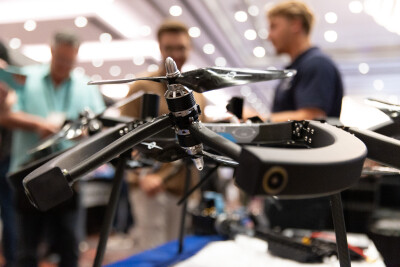The rise of the drone
When SPAR Point asked me to write a review of what we have seen in the 3D imaging industry in 2015 my fear was that perhaps it has all been said already. For those of you who have been following my blog this year, the overwhelming theme of the year has been the explosion in UAV platforms and their application in geospatial domain. The opportunity to develop technologies for the UAVs has been particularly attractive for start-ups, and the presence of Bay Area companies breaking into the relatively niche LiDAR and 3D imaging communities has given many events a new lease of life.
In North America, protocols for implementing UAV-based projects are perhaps now clearer than ever before, and over a relatively short period of time a plethora of platforms, sensors and software have become available. From a commercial point of view, UAVs have certainly provided new opportunities for end-users seeing the ability to access markets that might have not been practically or economically viable previously.
As someone who has previously worked in sales roles managing vendor distribution networks, it has also been very interesting to observe the feeding-frenzy of vendors and distributors making sure that they are tooled-up with their respective UAV-based solutions to serve this exploding market.
Increased accessibility
The proliferation of UAVs is really just a symptom of what I believe to be an even bigger trend that we have seen over the last year. What I would instead like to focus on is the increased accessibility to and awareness of technologies and issues that interest our niche professional community, among wider consumers. We are seeing an increased number of news items appearing at a national press level. Two examples include those in the last month appearing on the websites of the Canadian Broadcasting Corporation about the new FAA requirements for drone registration and the cost of LiDAR sensors for autonomous vehicles in the Washington Post.
One could argue that the 3D imaging sensors have “crossed the chasm” and are now mainstream in both the consumer and commercial markets. Some indicators that these technologies have become mainstream over the last year include:
- UAV mounted camera systems (while not necessarily being of survey quality) can easily be purchased from a High Street or shopping mall electronics store.
- At the Commercial UAV Expo I blogged about site superintendents on construction sites basing their plans for the day on photographic data collected by UAVs.
- Many of the industry events this year have seen an increased presence of low-cost handheld scanning devices such as that from Dot Product, or construction-industry solutions for these handheld systems such as those from Toronto-based start-up Shapetrace. I also blogged about seeing the HP Sprout desktop structured light scanner at my local stationary store.
- There is an increased emphasis upon solutions that enable users to get access to the information from 3D imaging, quicker. Fast data conversion routines or 3D data streaming solutions from innovative software firms such as Arithmetica or Pointscene, are enabling users to see results and unlock the value of 3D data without necessarily the need for expensive, complicated or specialist infrastructure for managing data that is perhaps voluminous and abstract to the lay user.
The objective of all the technologies mentioned is to demystify and lower the barrier of entry to the use of 3D capture technologies. No longer do you need to be involved in GIS, surveying or engineering to be aware of 3D imaging; being able to collect and interpret objects in the environment in 3D is certainly no longer the exclusive domain of the specialist laser scanning bureau anymore.
Optimistic outlook
Seeing the products of the 3D Imaging industry become much more pervasive is fantastic! This can only lead to increased business for vendors and service providers, in addition to their customers. As we head into 2016, there is a cautionary note that I will make that refers to the importance of workflow. With an increased number of non-specialists using 3D imaging technologies, the topic of understanding the questions that our clients need to ask in their own respective industries, rather than the questions that we want to ask ourselves, is even more relevant. With this brings the increased importance to ensure that there is education around how 3D data should be treated and used; for example, should 3D data always be meshed in order to use it most easily?
Finally, thank you for your interest as I have blogged my observations on the industry through 2015. I have appreciated hearing from so many of you who have been reading along the way, either on my travels or via my LinkedIn page. I hope that I have written content that has provided a useful perspective on our industry and look forward to writing more in the New Year. Until then, I wish you , your colleagues and your families a prosperous 2016.






